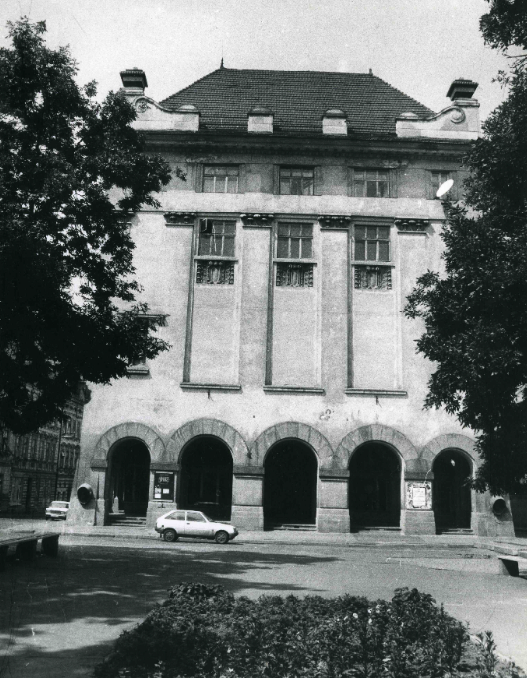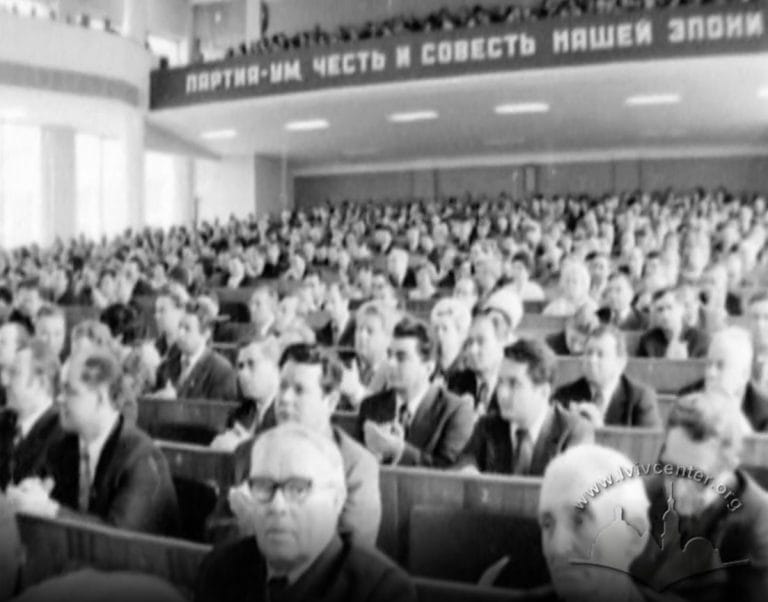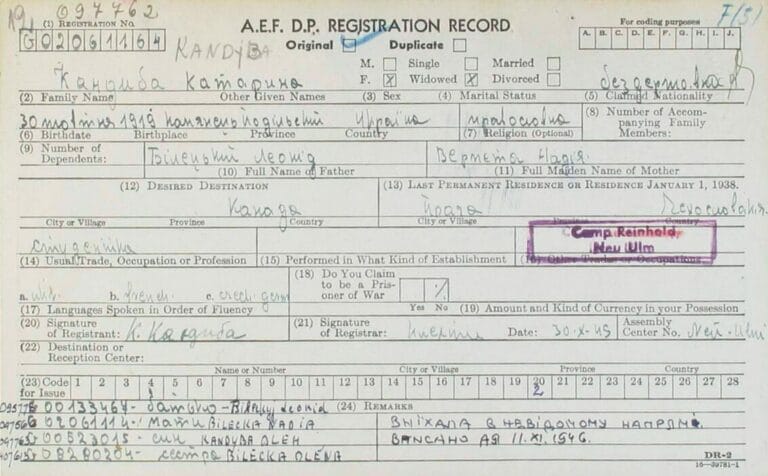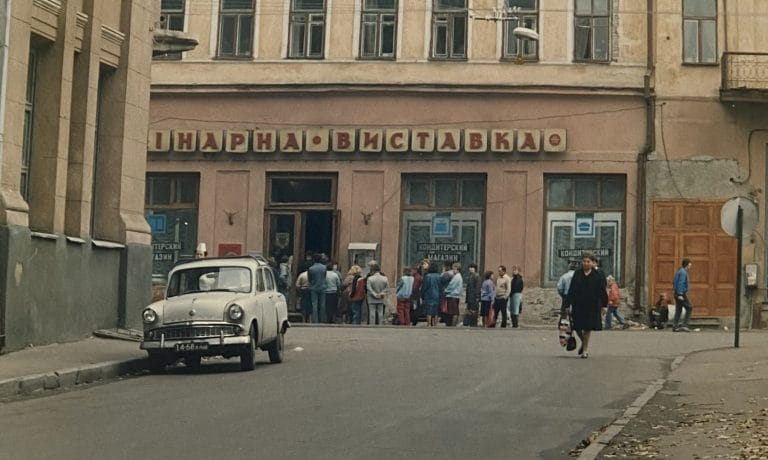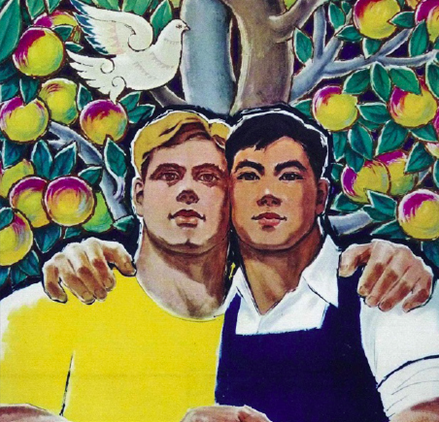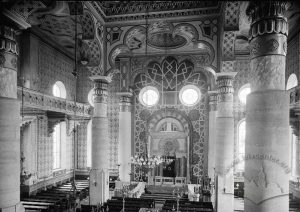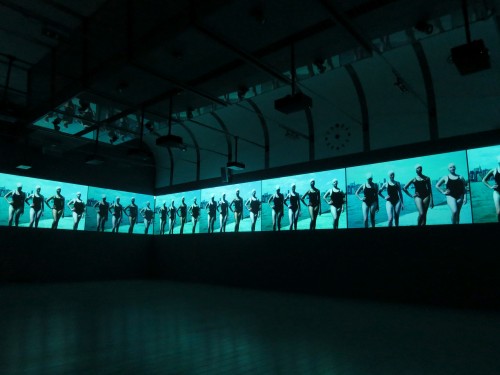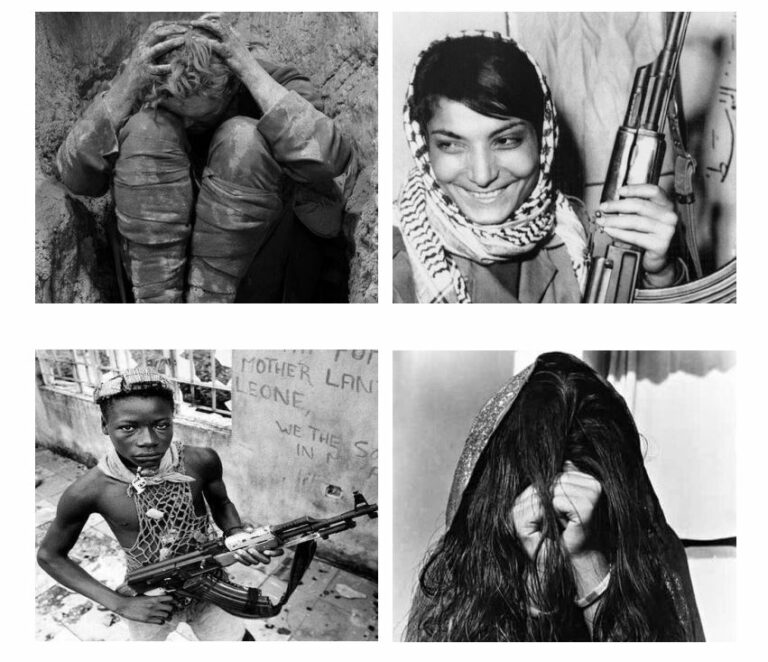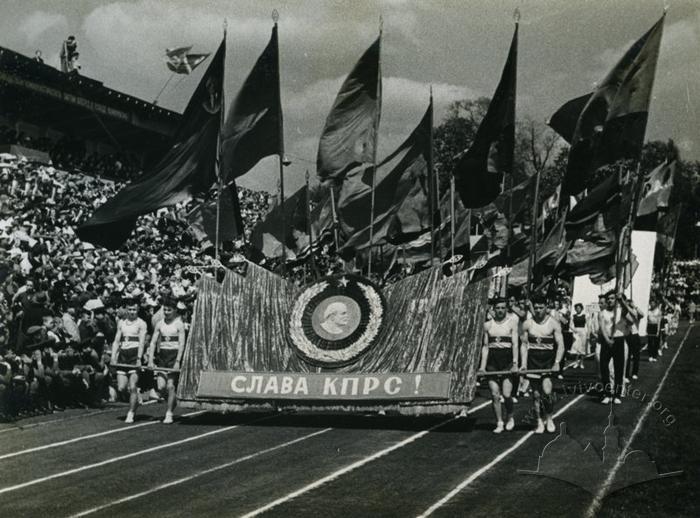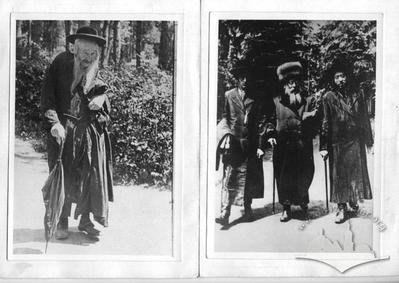1980s
Primary Sources

Ministry of Communications of the Ukrainian SSR on Jamming Foreign Radio Stations in the Republic, 1982
This document is a report from Heorhii Sinchenko, Minister of Communications of the Ukrainian SSR, to the Central Committee of the Communist Party of Ukraine on the subject of “counteracting anti-Soviet radio broadcasting.” The report includes a list of shortwave radio stations targeted for jamming and provides an overview of the relevant infrastructure in 1982. In addition to Western stations such as Radio Liberty/Radio Free Europe, the BBC, Deutsche Welle, South Korea’s Radio Korea, and the Voice of Israel, broadcasters from socialist countries with strained relations with the USSR—like Albania’s Radio Tirana and China’s Radio Beijing—were also jammed. In total, 37 "anti-Soviet" radio stations broadcast into Soviet Ukraine. During the early 1980s, as...

“Connections” as a Preventive Measure of Punishment for Abuse, 1985
The discussion of Case N at the Party Control Commission under the Central Committee of the Communist Party of Ukraine was initiated by letters from citizens—a typical occurrence in Soviet realities. What was unusual, however, was that these appeals eventually proved effective, leading to the punishment of a high-ranking official and his patrons. The central issue under the party commission’s consideration was N’s flawed management style, which resulted in a subjective personnel policy and adversely impacted the economic performance of the main department (abbreviated as Glavk), which had accumulated substantial receivables. Case N underscores the pervasive influence of patron-client relationships and sycophancy within the Soviet system. Despite repeated deficiencies in performance between 1981...

Unjustified Bonuses for High-Ranking Officials in the Crimean Oblast, 1987
In response to the resolution of the Central Committee of the Communist Party of Ukraine dated August 28, 1987, which highlighted instances of unjustified bonuses for high-ranking officials, oblast committees of the Communist Party of Ukraine were tasked with investigating similar practices in their respective oblasts. The Crimean Oblast Committee submitted a top-secret report to the Central Committee, providing a typical account of their findings. The violations uncovered followed a familiar pattern: exceeding prescribed bonus limits, lack of justification, and breaches of established procedures. The dubious grounds cited for awarding these bonuses reflected informal agreements between the heads of the awarding institutions and the beneficiaries. Notably, those involved were aware of the illegality...
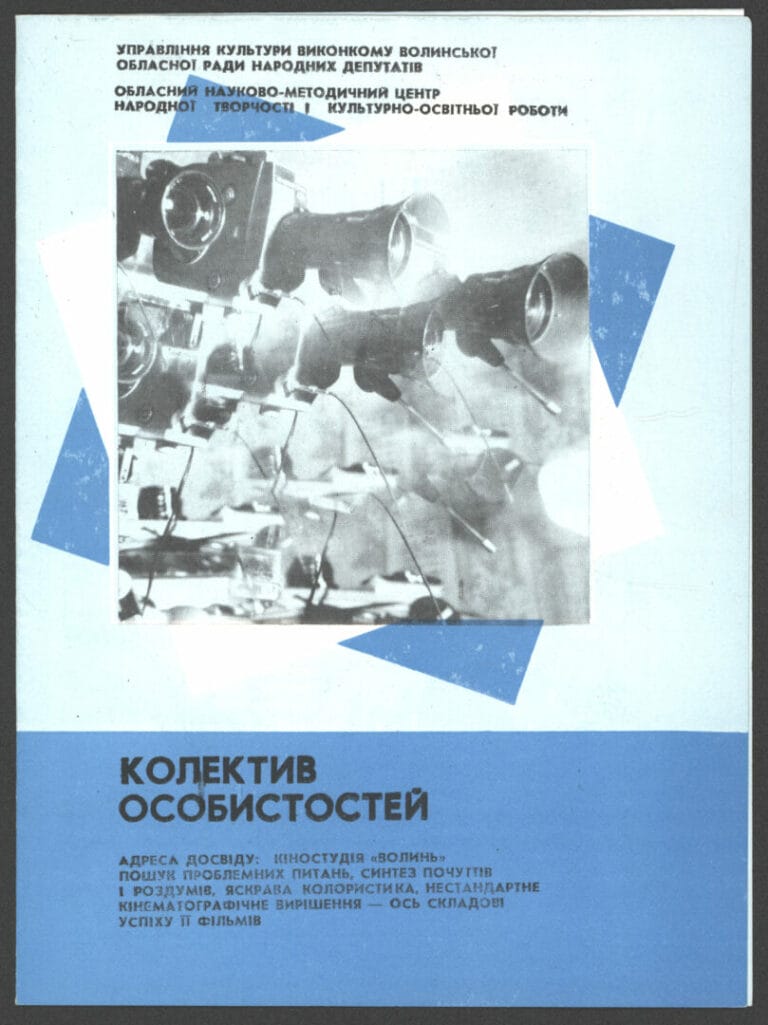
“A Collective of Individuals.” Booklet of the Volyn Amateur Film Studio, 1987
The source provided below is a promotional booklet from the Soviet amateur film studio “Volyn,” located in Lutsk. Unlike studios that were under the authority of and funded by trade union organizations, this studio was affiliated with the oblast department of culture. The booklet highlights the achievements and activities of the studio. This type of publication was widely circulated and exchanged at competitions and festivals of various levels. The presence of such printed materials could further indicate the level of financial support for the studio.

Resolution on work of Lviv oblast amateur film studios, clubs, and cinematographers, 1986
This document is a resolution of the Lviv Oblast Council of Trade Unions regarding the organization of an oblast seminar for leaders of amateur film studios, clubs, and cinematographers. It is a common example illustrating the degree of formalization and bureaucratic structuring within the coordinated amateur film community during the Soviet era. In its contents, we discern a distinct chain of command prevalent within the inter-republican hierarchy: the Ukrainian Republican Council of Trade Unions — the Lviv Oblast Council of Trade Unions — the Lviv Oblast Club-Laboratory of Trade Union Cinematographers — People’s Film Studio (one among several).

Michal Dubianecki about trade on the Minsk market, 1985
In 1979–1986, a Belarusian publisher, translator, and publicist Michal Dubianecki (1927-1990) was the director of the publishing house "Mastatskaya Litaratura" (lit. - Art Literature), and in the late 1980s he actively joined the national public life and co-founded the society "Martyrologist of Belarus" and the "Renaissance" Belarusian National Front. His diaries for 1979–1988 were published after the author's death in the journals "Flame" [Bel. - Полымя] and "Verb" [Bel. - Дзеяслоў]. In the quoted excerpt, Michal Dubianetsky talks about trade in the Minsk Komarovsky market in the mid-1980s. He talks about the prices for goods and shares his impressions of typical bazaar scenes.
Show more
Collapse all
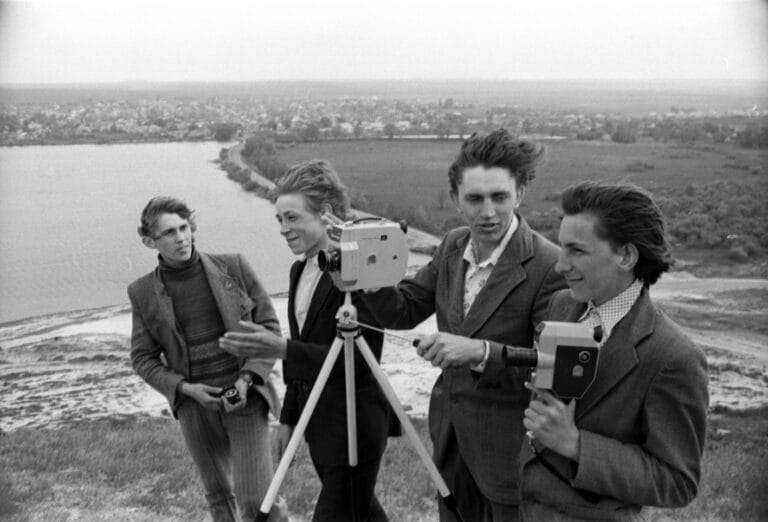
Members of the cinema club in the village of Novooleksandrivka, Ukrainian SSR, during a film shoot, May 1981
In addition to film studios, which predominantly comprised adults, the network of amateur filmmaking also encompassed groups tailored for children and teenagers, typically organized within houses of culture or schools. Oversight of these groups was typically carried out by representatives from People’s Studios and local film clubs. The archival caption of this photograph reads as follows: “Members of the cinema club at the House of Culture in the village of Novoaleksandrovka, Belovodsk district, Voroshilovgrad oblast, during a film shoot. From left to right: students Naydysh A, Petrov P, the club’s leader Kolesnik V. I., student Burian V. — village Novoaleksandrovka, 15 May 1981, by Y. Khromushyn (outdoors against the backdrop of a river).”

Where Are We Headed?, a 1989 Mariupol Studio Film
Where Are We Headed? reflects the ideas of Perestroika. It shows the increasing concern among the grassroots movements over the environmental issues. The film was created at the amateur “Kadr” film studio in Mariupol, Ukrainian Soviet Socialist Republic. It addresses the most pressing environmental problems in Mariupol (in 1984-1989 called Zhdanov, after the Soviet revolutionary, politician, and accomplice in the Great Purge of 1937-1938, Andrei Zhdanov).

Bilka, ‘Murator’ People’s Studio Film
A film by amateur filmmaker Roman Buchko, co-directed with Volodymyr Bordiuk and Roman Chyzhyk. The film is named after the Bilka River in Lviv Oblast, a right tributary of the Poltva (Vistula River basin). It was created at the Murator People’s Film Studio of the Lviv House of Culture of Builders. The triple authorship reflects the specifics of amateur filmmaking in the USSR, where any amateur activity had to be collective. The chosen topic and content of the work were characteristic of Roman Buchko, who systematically worked with this theme. Buchko hailed from the area depicted in the film, the village of Hai, near Zvenyhorod. Noteworthy is that Volodymyr Bordiuk, head...

Roman Buchko on Soviet Film Amateurs: Excerpt from an Interview on November 1, 2012
Comment will follow...
In addressing the causes of unlawful actions committed by high-ranking officials in the 1940s and 1960s, the authorities often attributed them to the lingering influence of pre-revolutionary capitalist mentalities among certain managers. This explanation lost credibility over time, as by the 1970s and 1980s, the leadership consisted largely of individuals born and fully socialized within the Soviet Union, supposedly free from the flaws of other, non-communist societies. In this module, Viktor Krupyna uses unpublished archival materials and available source collections to examine the widespread abuse of power by Soviet officials in the Ukrainian SSR in 1945-1991, its causes, scope, and consequences.
This module by literary scholar Olha Petrenko-Tseunova tells the story of Kateryna Biletska-Kandyba, the wife of Oleh Kandyba (known by the literary pseudonym Oleh Olzhych), a poet and member of the Ukrainian nationalist underground, head of the cultural and educational department of the Leadership of Ukrainian Nationalists (PUN) and the Revolutionary Tribunal of the Organization of Ukrainian Nationalists (OUN) (1939-1941), and her WWII experience and post-war emigration.
The early vision of amateur filmmaking in the Soviet Union was characterized by the pragmatic idea of using the new media not only for entertainment but also to involve a wide range of citizens in the production of newsreels and to create a network of correspondents across the country to cover the construction of socialism. However, despite sporadic attempts, this idea was not immediately implemented on a large scale. The lack of technology and sufficient equipment, and later the political climate of the 1930s, hindered this. It was only after liberalization and Khrushchev's reforms that the idea reappeared on the agenda.
In the last decade, the Ukrainian parliament has issued two laws outlining the legal framework for dealing with the Russian imperial and Soviet past. These laws have sparked numerous scholarly debates on how to address the imperial past, Ukraine's status as part of the Romanov Empire and the Soviet Union, and what to do with the cultural products created over the centuries. This course aims to explore the Soviet legacy in present-day Ukraine and provide students with the necessary theoretical and methodological tools for studying, researching, and writing about Soviet history and culture. The implications for modern Ukrainian identity and politics, particularly in the context of the ongoing war with Russia, will be...
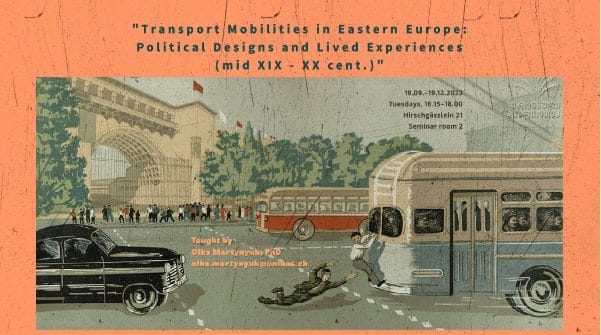 Transport Mobility in Eastern Europe: Political Designs and Lived Experiences (mid XIX – XX Century)
Transport Mobility in Eastern Europe: Political Designs and Lived Experiences (mid XIX – XX Century)
The course invites to explore East-European History of mid XIX - late XX cent. through the concept of mobility, which encompasses movement of people, goods and ideas. Students will deal with a corpus of texts on social history of transportation, as well as with a rich array of visual materials. Of special interest will be cases, specific to the region, for example cultures of Christian and Muslim pilgrimage, Socialist rallies, trolleybus infrastructures or “destalinization” of metro stations. Cases of imported western technologies will provide ground for interregional comparisons, not only in aspects of introduction of transport system, but also in aspects of their exploitation and disintegration. The course is built on a premise...
The course invites to look at the history of Soviet Ukraine from the perspective of its everyday practices. Using many visual sources from 1922 to 1991, students will explore daily routines, housing, clothing, transportation, leisure, and music consumption in urban and rural settings. Periods of peace, war, and crisis will receive equal attention so that one can see how global developments were experienced on a microlevel. Students will explore how maintaining everyday objects and personal habits was essential for building personal safety in different historical contexts. The everyday histories of Soviet Ukraine will also provide a deeper insight into the standard historical narratives about East-European societies, particularly their dialogue with the global society...
This lecture course comparatively and transnationally investigates twentieth-century communism as a modern civilization with a global outreach. It looks at the global spread of communism as an ideology, an everyday experience, and a form of statehood in the Soviet Union, Europe, Asia (i.e.Mao’s China), and post-colonial Africa. With the exception of North America and Australia, communist regimes were established on all continents of the world. The course will examine this historical process from the October Revolution (1917) to the Chernobyl nuclear disaster (1986), which marked the demise of the communist state. The emphasis is not just on state-building processes or Cold War politics but primarily on the social, gender, cultural and economic policies that...
The course explores the history of Russia as an empire from Peter I up to now in the methodological perspective of the new imperial history. What are the historical preconditions and sources of Russian imperialism and militarism? How did the small principality of North-Eastern Europe manage to create the largest empire in the world? To what extent the Russian Empire of the 18th and 19th centuries differed from European colonial empires as well as eastern imperial polities such as Ottoman Empire and China? How did the imperial nationalities policies emerge and evolve? What role did the competition between "great powers" play in turning Russia into an empire? The course attempts to answer these...
The field of social history has achieved the edge of its popularity in 1950-1980s. It was strongly connected with other disciplines, such as economics, demography, sociology, and allowed historians to reach a much wider range of research themes. Since the 1960s, the social history of the Jewish people became important and influential part of the studies. Historians were exploring the possibilities to study Jewish community with new tools and integrating different representatives of Jewish community – workers, women, immigrants, criminals - in a research. Since 1990s historians of Jewish past shifted their interest to cultural studies. However, in the last years, we can see an economic turn, which signifies the search for a...
The aim of the course is to get to know how to analyze examples of visual culture, including: fiction films and documentaries, video, photography. Both contemporary and historical materials will be studied, together with theoretical texts and publications (from the area of film and media studies, anthropology, cultural studies and history. Although images are mostly seen, if you want to really know them and understand them really well, you must not only "see" them but also "read" them, that means to analyze them as a complex message/ text. That is why at our course we will firstly discuss some terms and categories, that would help us to read images such as: composition, convention,...
The course aims to discuss the major military conflicts of the twentieth century from a gender perspective. In doing so, the course covers the history of global and local wars in a wide variety of regions, including Europe, Africa, and Asia. However, rather than surveying a vast number of military conflicts, we will use a case study approach to conduct in-depth analyses of external and internal dynamics of military encounters and the role of gendered violence during them.
In our mini-course we will explore cultural interaction between Jews and non-Jews (Ukrainians, Poles, Russians) in the borderlands of the Habsburg and Romanov empires. This is interaction that may have been conscious or unconscious, and may have involved encounter, appropriation, negotiation, exchange and destruction.
This seminar explores ideas and practices of heritage in Eastern and Central Europe between 1945 and now. The course is designed as a set of five meetings, which will include short lecture introductions, seminar discussions, and at the end – practical workshop. Our meetings will be about discussing the texts, addressing cases you will read about or already know. Thіs the seminar will be our common effort in reading, asking questions and searching for answers. Therefore it is crucial that you will read assigned parts of selected texts and also consult texts from the recommended reading list. While reading assigned texts, please keep a short track of your ideas and formulate several questions...
Ukraine’s twentieth century was tragically marked by much politically motivated violence and authoritarian regimes as well as movements, from the radical left and the radical right. These forces and events did not only do great harm in the past but left memories and legacies that are still challenging to contemporary Ukraine. In this class, we will focus on several key issues of history, memory, and politics. The readings cannot be exhaustive. Instead, our aim is to read and discuss a sample of important short texts that allow us to reflect more broadly on the underlying questions.
This course was a part of Jewish History, Multiethnic Past, and Common Heritage: Urban Experience in Eastern Europe summer school.
This course forms a part of Jewish History, Multiethnic Past, and Common Heritage: Urban Experience in Eastern Europe summer school.
The course will cover the major development of the East European Jewry from the mid-eighteenth century till the present. More specifically, it will focus on the apparently largest category of modern Jewish history, i.e. modernity itself. The course will start with the discussion of what modernity means in contemporary scholarly discourse, and—more specifically—how it is applied today in historiography of East European Jewry. This introduction will provide a frame for the focus of the course: the analysis of the changing life patters and differing strategies of adopting, rejecting, or negotiating modernity in every-day lives of East European Jews.

